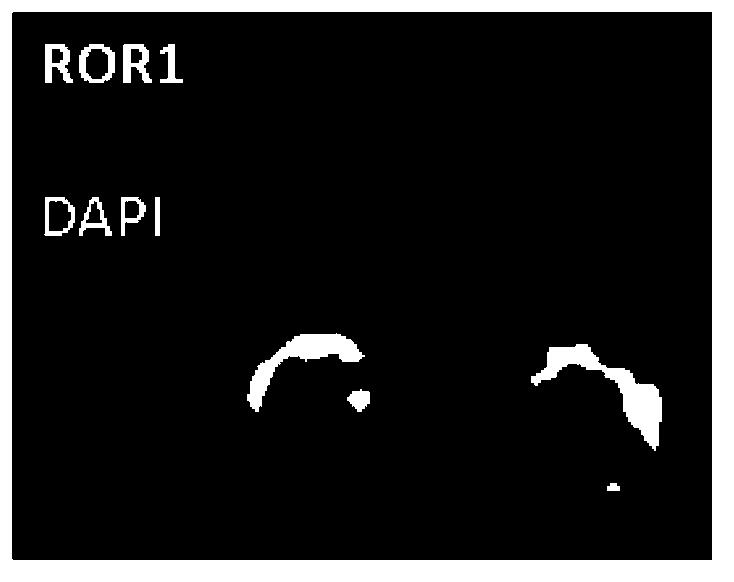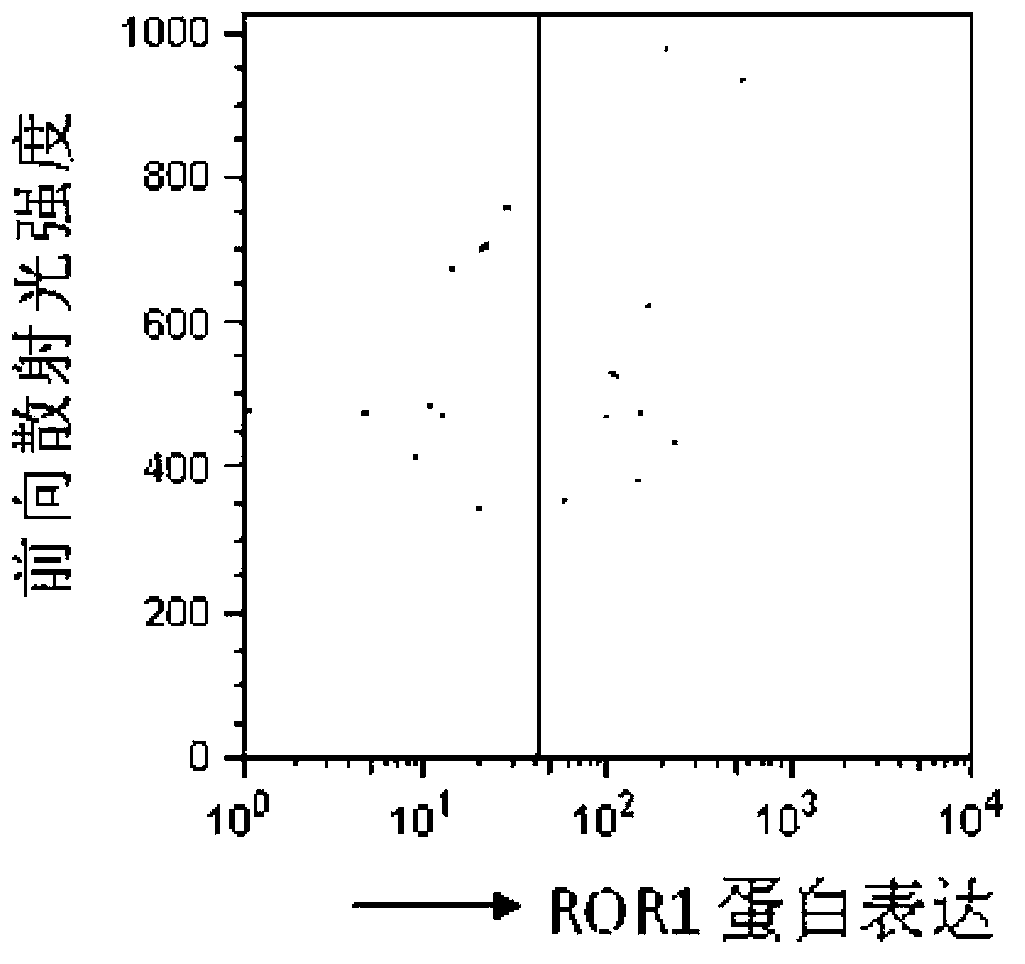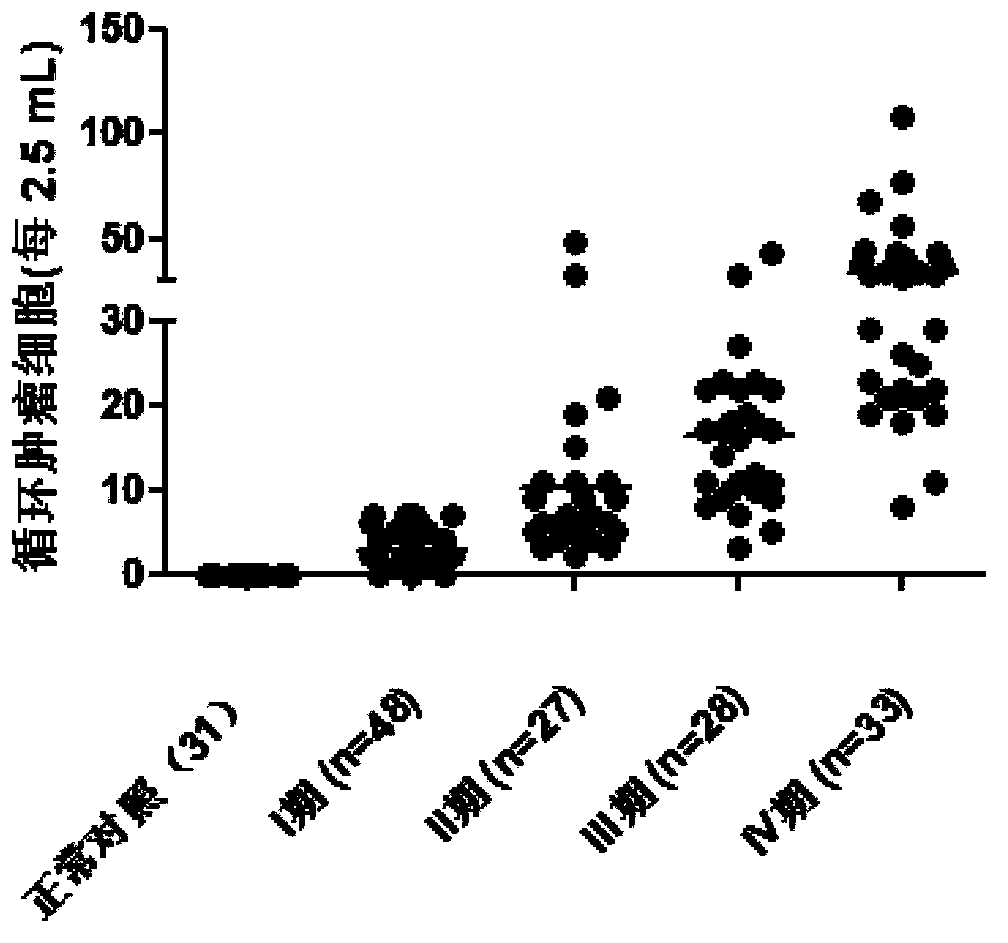Reagent for detection of ROR1 protein of circulating tumor cells in peripheral blood and application thereof
A tumor cell and peripheral blood technology, applied in the field of protein detection, can solve problems such as lack, achieve the effect of improving accuracy and reliability, and overcoming limitations
- Summary
- Abstract
- Description
- Claims
- Application Information
AI Technical Summary
Problems solved by technology
Method used
Image
Examples
Embodiment 1
[0036] Example 1. Detection of ROR1 on circulating tumor cells - immunofluorescent staining
[0037] Circulating tumor cell ROR1 protein detection reagents include: fixative solution, buffer solution, fluorescently coupled anti-ROR1 antibody, fluorescently coupled anti-CD45 antibody mixture, DAPI fluorescent dye and mounting solution. ROR1 antibody is prepared from the recombinant protein obtained from CHO cells transfected with the extracellular fragment of human ROR1 (the sequence of the recombinant protein of ROR1 antibody is as follows). After incubating the enriched circulating tumor cells of lung cancer fixed on the glass slide with PBS at room temperature for 5 minutes, the PBS was discarded by suction. Add 1:200 Alexa Flour 488-coupled anti-ROR1 antibody and 1:400 Alexa Flour 594-coupled anti-CD45 antibody mixture (0.5% BSA-PBS), and incubate at room temperature for 30 minutes in the dark. Aspirate the antibody. Wash slides 3 times with 0.5% BSA-PBS for 3 minutes eac...
Embodiment 2
[0045] Example 2. Flow cytometry is used to detect circulating tumor cells expressing ROR1 in the blood of cancer patients
[0046] Circulating tumor cells from cancer patients were incubated with fluorescently labeled ROR1 antibody or control antibody (Isotype IgG) in incubation solution for 20 minutes at 4°C. The incubation solution contained 3% FBS and 1M HEPES in phosphate buffer (pH 7.4). After washing twice with phosphate buffer, the cells were measured by flow cytometry. The results were analyzed with FlowJo software and figure 2 shown in . The picture shows the detection results of a representative number of circulating cells. On the left, cells stained with a fluorescently labeled isotype control antibody (blue); on the right, cells stained with a fluorescently labeled ROR1 antibody (red).
Embodiment 3
[0047] Example 3. Detection of circulating tumor cells in lung cancer patients: comparison between ROR1 kit and traditional methods
[0048] A comparative study was carried out on 25 patients diagnosed as primary lung cancer in clinical cases. Tumor cells enriched from each lung cancer patient were suspended and equally divided into two parts. One part uses the existing technology to detect the keratin (CK) expression of circulating tumor cells; the other part uses the technology of the present invention to detect the ROR1 protein of circulating tumor cells. After acetone fixation, the former was stained with FITC-conjugated anti-CK antibody mixture (anti-CK18, etc.) and DyLight 549-conjugated anti-CD45 antibody, and the nuclei were stained with DAPI; the latter was detected with the ROR1 protein reagent described in Example 1. Circulating tumor cells were positive for CK or ROR1, negative for CD45, and positive for nuclear staining. As shown in Table 1, the number of circul...
PUM
 Login to View More
Login to View More Abstract
Description
Claims
Application Information
 Login to View More
Login to View More - R&D
- Intellectual Property
- Life Sciences
- Materials
- Tech Scout
- Unparalleled Data Quality
- Higher Quality Content
- 60% Fewer Hallucinations
Browse by: Latest US Patents, China's latest patents, Technical Efficacy Thesaurus, Application Domain, Technology Topic, Popular Technical Reports.
© 2025 PatSnap. All rights reserved.Legal|Privacy policy|Modern Slavery Act Transparency Statement|Sitemap|About US| Contact US: help@patsnap.com



